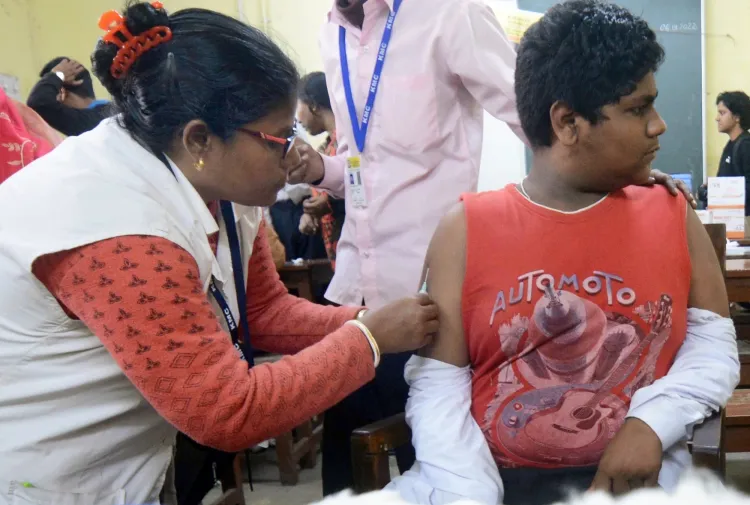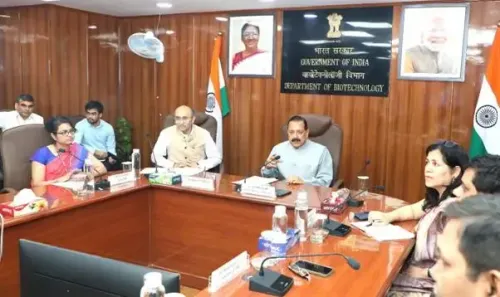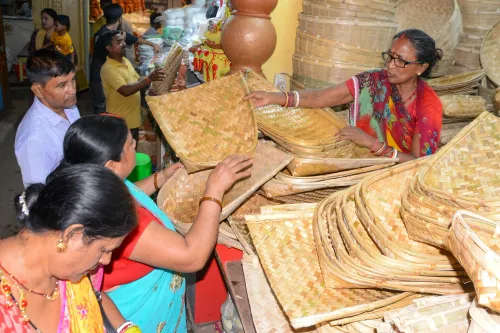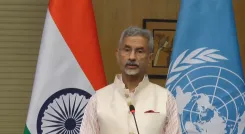Is India Witnessing a Surge in Measles Vaccination Amid Global Outbreaks?

Synopsis
Key Takeaways
- Measles vaccination coverage has increased significantly in India.
- The measles vaccine is provided free of cost across the country.
- India aims to eliminate measles and rubella by 2026.
- Progress has been made in controlling Japanese Encephalitis, dengue, and malaria.
- Notable improvements in Mass Drug Administration have been reported.
New Delhi, July 22 (NationPress) In light of a rising measles outbreak in the US and Canada, India has experienced a notable increase in vaccine coverage for this highly infectious disease, Anupriya Patel, Union Minister of State for Health and Family Welfare, stated during the ongoing Monsoon Session of Parliament on Tuesday.
In a written response to the Rajya Sabha, Patel announced that the measles vaccine is available free of charge across the nation, particularly in at-risk areas, through the Universal Immunization Programme (UIP).
According to the Health Management Information System (HMIS) for 2024-25, the coverage rates for the first dose (MCV-1) and second dose (MCV-2) of the Measles containing Vaccine have reached 97.8 percent and 93.3 percent, respectively.
India's goal is to eradicate measles and rubella by 2026. Data from the World Health Organization (WHO) indicates that there have been 4,388 cases of measles and 527 cases of rubella reported this year in India.
Globally, measles cases are on the rise in the US, Canada, Mexico, South America, and parts of Europe. In 2025, North and South America reported 11 times more cases than the previous year, while Europe is experiencing its highest measles rates in 25 years.
Additionally, Patel informed the Upper House about the government's significant accomplishments in the elimination and control of major vector-borne diseases such as Japanese Encephalitis, dengue, and malaria.
The Case Fatality Rate (CFR) for Japanese Encephalitis has decreased from 17.6 percent in 2014 to 7.1 percent in 2024. The CFR for dengue has remained below 1 percent since 2008, recorded at 0.13 percent in 2024.
Moreover, India has achieved a 78.1 percent reduction in malaria morbidity and 77.6 percent reduction in malaria mortality from 2015 to 2024. The Annual Parasite Incidence (API) has also decreased to 0.18 in 2024 from 0.92 in 2015.
Patel also emphasized the improved coverage of Mass Drug Administration (MDA), crucial for controlling neglected tropical diseases (NTDs) like Lymphatic Filariasis.
MDA coverage has risen from 75 percent in 2014 to 85 percent in 2025 for the total population, with 143 out of 348 endemic districts having ceased MDA and successfully passed the Transmission Assessment Survey (TAS1), up from 15 percent in 2014.
Furthermore, the control of another NTD, Kala-azar (visceral leishmaniasis), has seen notable success.
The target for eliminating Kala-azar of fewer than one case per 10,000 population across 633 blocks in 54 districts of endemic states for 2023 has been achieved well ahead of the 2030 global SDG target, with this status maintained to date.









